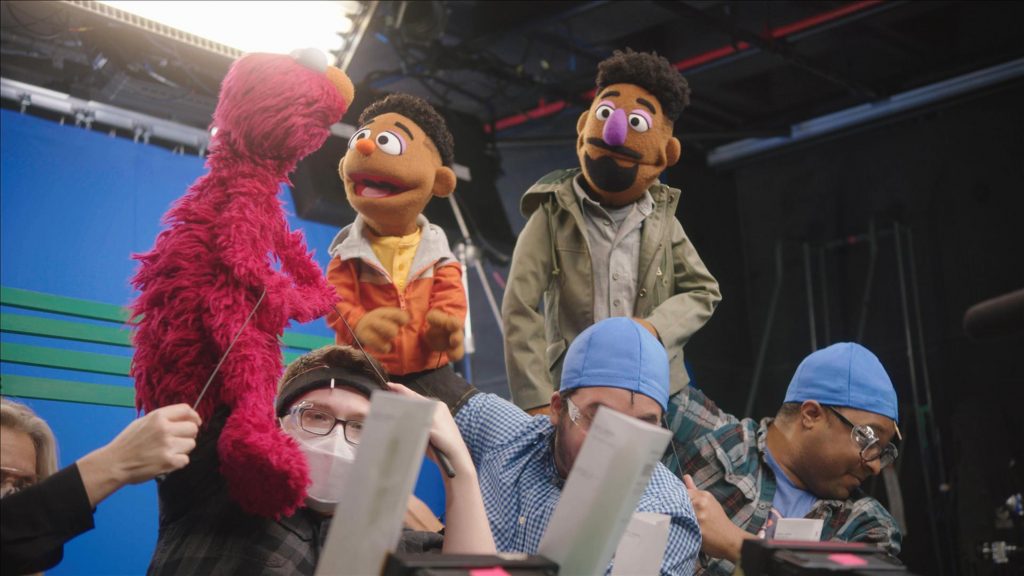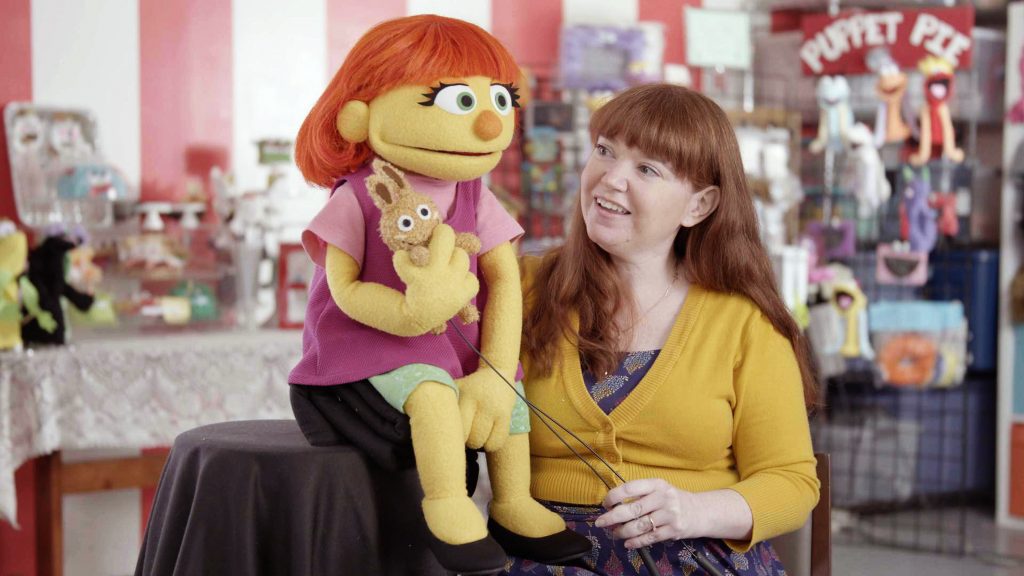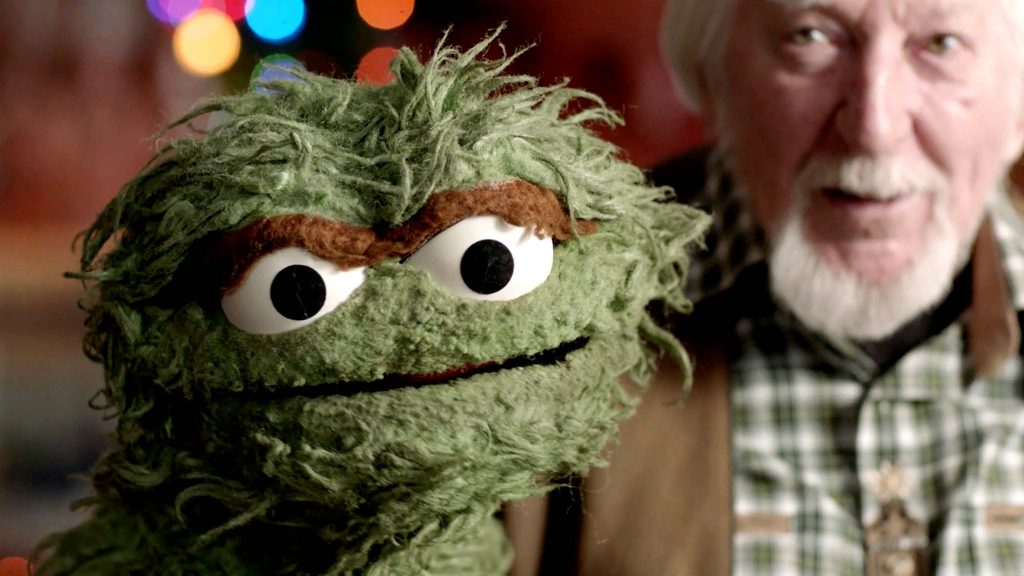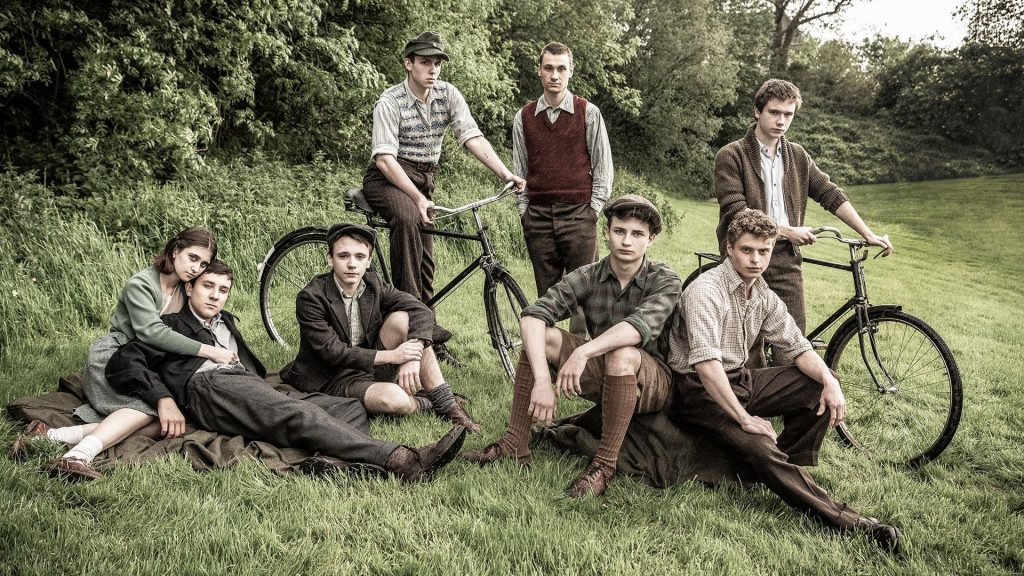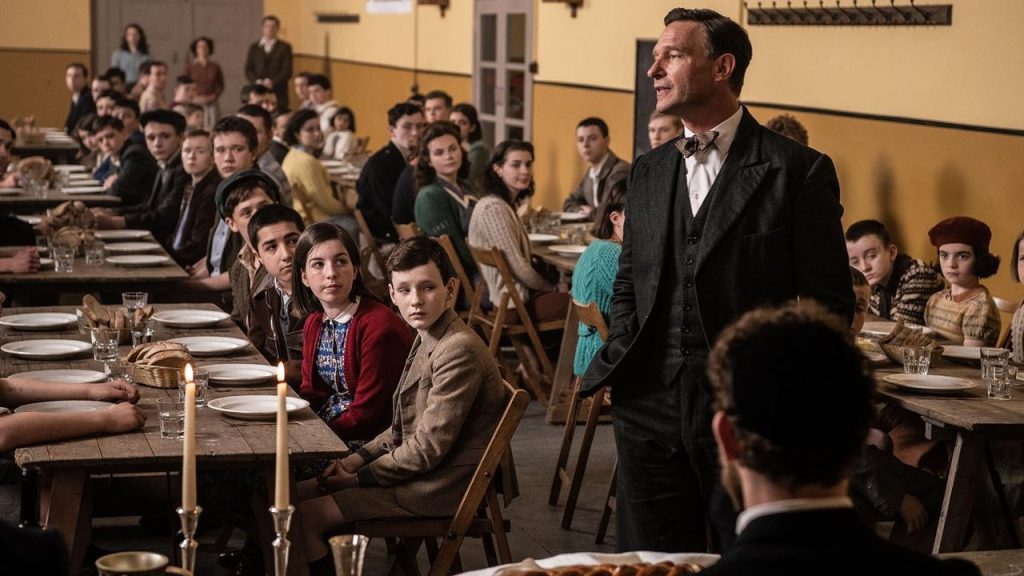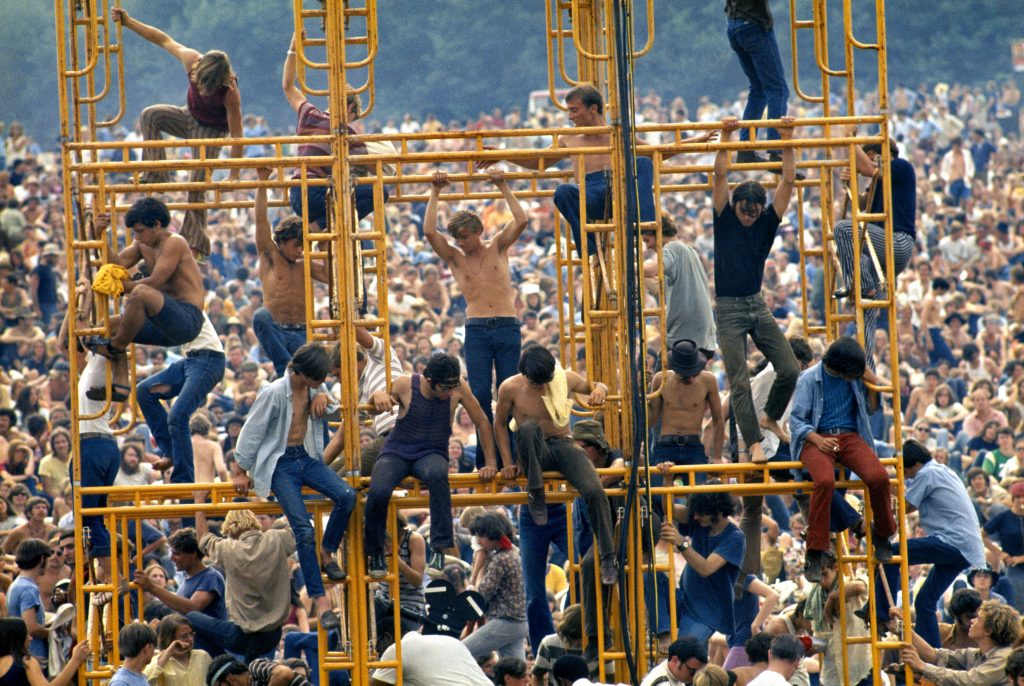June 22, 2023
by Carla Hay
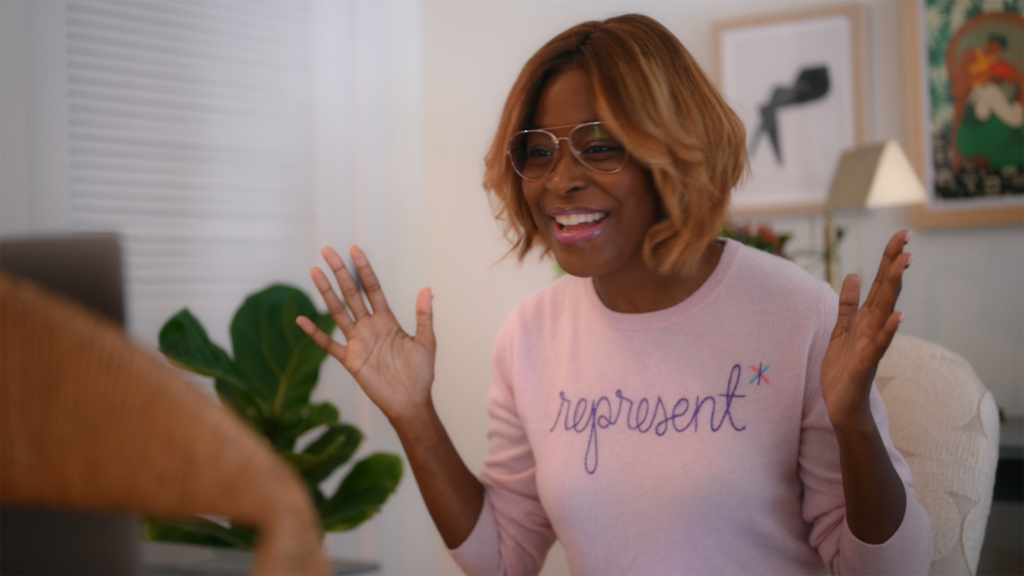
Directed by Heather Courtney, Princess A. Hairston and Chelsea Hernandez
Culture Representation: Taking place from 2020 to 2022, in various parts of the United States, the documentary “Breaking the News” features a predominantly white group of people (with some African Americans, Latinos and Asians) who are connected in some way to The 19th* news media outlet.
Culture Clash: The 19th* experiences ups and downs during the COVID-19 pandemic, including a reckoning about needing more diversity on its staff.
Culture Audience: “Breaking the News” will appeal primarily to people who are interested in watching a documentary about start-up media groups and news media coverage from a female perspective.

“Breaking the News” is a smart and incisive look at the origins and growing pains of The 19th* as a groundbreaking female-centric news media outlet. This documentary is honest about showing that some women have more privilege than others in battling sexism. “Breaking the News” isn’t just about reporters getting news scoops. The movie also offers a realistic look at keeping a start-up company afloat during the COVID-19 pandemic. “Breaking the News” had its world premiere at the 2023 Tribeca Festival.
Directed by Heather Courtney, Princess A. Hairston and Chelsea Hernandez, “Breaking the News” (which was filmed from 2020 to 2022) begins in March 2020, the first month of COVID-19 pandemic lockdowns around the world. The 19th* (which is headquartered in Austin, Texas) was co-founded as a non-profit group by Emily Ramshaw and Amanda Zamora in 2017, as a reaction to Donald Trump being elected president of the United States. The concept was to have a female-oriented news website staffed by women and reporting news that is considered important to women.
The 19th* is named after the U.S. Constitution’s 19th Amendment, which gives women U.S. citizens the right to vote. It’s explained in the documentary that the asterisk in The 19th* signifies that there’s more work to be done for women’s rights in the United States and around the world. When The 19th* began, the staff and freelancers consisted entirely of women. Now, there are a few men and gender non-conforming people who are among The 19th* employees.
Although the leaders of The 19th* say in interviews that this news media outlet is non-partisan, the reality is that the political views expressed by the majority of the staff are undoubtedly liberal—either progressive or moderate. And it seems as if the core audience for The 19th* also has a left-leaning perspective, based on a segment in the documentary showing that The 19th* receives numerous complaints from readers every time The 19th* interviews a politically conservative person. The 19th* publishes original content on its own platforms and syndicates its content to various other media outlets, including The Washington Post.
At the beginning of the COVID-19 pandemic, The 19th* was in the process of raising another round of funding. Ramshaw (a former reporter with the Dallas Morning News and Texas Tribune) is shown in the beginning of the documentary having a Zoom conference call with Whurley, a well-known investor. He bluntly tells her, “I think journalism is dead.” But he makes this optimistic remark: “All the great startups started under terrible circumstances.”
Ramshaw has the title of CEO of The 19th*, while Zamora has the title of publisher. Both women say in the documentary that they knew at an early age that they wanted to become journalists. Although Ramshaw is shown doing some fundraising responsibilities, her main preoccupation shown in the documentary is managing the growing staff of The 19th* and making executive decisions about the editorial direction of the company. Andrea Valdez, who is also based in Austin, works closely with Ramshaw as The 19th* editor-in-chief until she is replaced by Julie Chen, whose appointment is shown toward the end of the documentary.
As the publisher, Zamora is shown worrying about being able to pay the salaries of The 19th* employees during a time when media outlets are downsizing or having hiring freezes during the pandemic. As a non-profit startup, The 19th* faced its share of challenges that were made more difficult in the middle of an economic downturn. However, 2020 turned out to be a pivotal and breakout year for The 19th*, due to the U.S. presidential election and the worldwide racial reckoning over police killings of unarmed African Americans.
Several editorial employees for The 19th* are shown in “Breaking the News,” but the documentary gives a particular focus on four of these employees: Errin Haines, a Philadelpha-based former Associated Press reporter, is an editor-at-large with a specialty in covering racial issues. Kate Sosin, a former employee of Viacom and NBC, is a transgender reporter covering LGBTQ+ issues. Sosin’s pronouns are they/them. Chabeli Carrazana (based in Orlando, Florida) has an editorial beat covering the economy. Abby Johnston is The 19th*s deputy editor.
One of the biggest criticisms of many feminist groups is that they tend to give the most power and importance to middle-class and wealthy cisgender, heterosexual white women. Ramshaw fits that description. Zamora (formerly of the Texas Tribune) is Latina, but in the documentary, Zamora acknowledges that she has privilege because she appears to look white. There are some scenes in the movie where Ramshaw shows that she’s living in a bubble and can’t really see the perspective of other women who are not in her own demographic.
For example, in May 2020, a video went viral of a racist confrontation in New York City’s Central Park, where an African American bird watcher named Christian Cooper asked a white woman nearby named Amy Cooper (no relation to Christian Cooper) to put a leash on her dog, because it’s the law in New York City to have dogs on leashes when the dogs are in public. In response, an angry Amy Cooper called 911 and falsely claimed that Christian Cooper was physically attacking her. She made a of point of repeating that an African American man was assaulting her.
Haines felt this story was important enough to report to show how some white women can use white supremacist racism as a way to put people of other races, particularly African Americans, in harm’s way with false accusations. In a completely tone-deaf moment with racial overtones, Ramshaw is shown questioning Haines on whether or not The 19th* needed to cover the case in the first place. Without knowing all the facts, Ramshaw wonders out loud if Christian Cooper did anything to provoke Amy Cooper. (When police arrived at the scene, Christian Cooper and Amy Cooper both were not there, but the situation could have escalated.)
Haines (who is one of the smartest and most well-connected people on The 19th* team) patiently explains to Ramshaw that America has a long history of African American people being killed because of false accusations from white women. The story is eventually assigned to Haines, with Ramshaw still being skeptical that it was important for The 19th* to report. Of course, the story ended up becoming huge international news. Later, Ramshaw makes an apology to her staff for her error in judgment and for being so ignorant.
It took this Christian Cooper/Amy Cooper story for Ramshaw to understand the ugly truth that these types of false accusations rooted in racism aren’t just stories about past lynchings but can still happen various ways today. If there had not been a video showing that Amy Cooper was lying, and if the police had shown up during this incident, it’s very likely that Christian Cooper would have been arrested based on a false accusation. “Breaking the News” shows that when an editor in charge of assignments lacks this intelligence or empathy about racial issues, it can negatively affect the type of coverage that the editor chooses to assign.
On a side note, after this Central Park video went viral, Amy Cooper was fired from her job at an investment firm. She was charged with the misdemeanor of filing a false police report. The charge was ultimately dismissed because Christian Cooper decided not to press charges against her, and she agreed to enroll in a racial bias therapy program. Amy Cooper’s wrongful termination lawsuit and appeal have been dismissed by the court system.
Under Ramshaw’s leadership, The 19th* is shown as being not very open to having a diverse representation of LGBTQ staffers. During most of the time that this documentary takes place, Sosin is the only openly LGBTQ employee on staff. Sosin repeatedly asks Ramshaw and other supervisors of The 19th* to hire more LGBTQ staffers, so that Sosin isn’t the only one. Ramshaw is shown making excuses for delaying this inclusive hiring. There’s really no good excuse for it, considering all the cisgender heterosexual women that The 19th* made the effort to recruit.
One of the more poignant scenes in the documentary is when Sosin confesses that when employees of The 19th* were celebrating the website’s launch day, Sosin spent the day at home crying because Sosin felt left out and sidelined for being a transgender person. Sosin is intelligent and a tremendous asset to The 19th* team. It’s really unconscionable that a so-called inclusive media group would take so long to hire more than one LGTBQ+ person to cover LGTBQ+ issues. It eventually happened, but only after Sosin and other staffers had to push for it. Ramshaw made an apology to The 19th* employees about that diversity problem too.
But for every misstep that Ramshaw might have taken, The 19th* had some triumphs. Haines was the first reporter to get an exclusive interview with family members of Breonna Taylor, a 26-year-old African American nursing student who was shot to death in March 2020, by white police officers while sleeping in her home in Louisville, Kentucky. The officers claimed it was a case of a mistaken identity because they went to the wrong house during a warrant raid. The 19th* was also the first media outlet to interview Kamala Harris after it was officially announced that she would be Joe Biden’s vice presidential running mate. Haines got that scoop too.
Sosin was at the forefront of reporting many LGBTQ+ issues, especially in the trans community where health care and crime have disproportionately more devastating effects than for cisgender people. For example, many states have been slashing public health funding for gender affirmation surgeries. And crimes against transgender people are often underreported or often don’t get adequate investigations, compared to crimes against cisgender people.
Sosin’s story for The 19th* about how the pandemic was affecting transgender surgeries ends up being one of the biggest viral stories for The 19th* in that period of time. Sosin is shown interviewing people such at Transhealth in Northampton, Massachusetts, including CEO Dallas Ducar, charge nurse Arin McLona and pediatrician Dr. Drew Cronyn. They all express concerns about how certain U.S. states are starting to make their work more restricted or illegal.
Carrazana tells her personal story about being a Cuban American. She says that coming from an immigrant, working-class family gives her more empathy and understanding in covering underrepresented communities for economic news stories. Almost all of The 19th* employees featured are shown working from home during the pandemic lockdowns.
The movie also briefly shows the personal lives of featured employees of The 19th*, as a way of demonstrating that these are well-rounded people. Ramshaw, Zamora, Sosin and Carrazana are seen with their spouses or partners. Haines is shown having a close relationship with her mother, whom she calls on a regular basis. And most of these employees have adorable dogs, who sometimes amusingly get in the way while the employees try to work from home.
“Breaking the News” includes footage of how The 19th* covered historical moments, such as the 2020 U.S. presidential election; the U.S. Capitol riots that occurred on January 6, 2021; and the U.S. Supreme Court’s 2022 overturning of Roe v. Wade that gave federal protection for abortion. The documentary does not over-simplify or gloss over the real problems that The 19th* has or the mistakes that were made by the company’s leadership. The measure of any group’s future is how it can learn from its mistakes and make improvements.
It remains to be seen how long The 19th* will last. However, “Breaking the News” is an insightful look at the early years of this resourceful news media outlet. It’s not only an inspiring documentary but also a stark reminder that with all the progress made in women’s rights, a female-dominated news media outlet is still a rarity today.
UPDATE: The PBS series “Independent Lens” will premiere “Breaking the News” on February 19, 2024.

